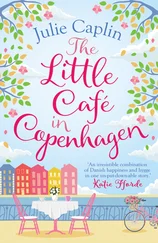Eighteenth-century sentimentalism, the understanding that people were first and foremost creatures of feeling, considered sympathy as the key human quality. As the philosopher David Hume put it, ‘No quality of human nature is more remarkable, both in itself and its consequences, than that propensity we have to sympathize with others, and to receive by communication their inclinations and sentiments, however different from, or even contrary to our own 115 .’ Sympathy was the means by which sentiments were communicated; it was the psychological and emotive transaction that placed them at the heart of social life. Sensibility, in turn, was the ability to feel and exert sympathy; it was, according to The Monthly Magazine , ‘that peculiar structure, or habitude of mind, which disposes a man to be easily moved, and powerfully affected, by surrounding objects and passing events 116 ’.
But sensibility, though seen as a psychological phenomenon, was also viewed as an ethical response. Sentimental feeling, the exercise of sympathy, was a form of moral reflection, for which some people had a greater capacity than others. To be able to express sympathy was to be a better moral being. The key physical sign of sensibility – a spontaneous tearfulness – also became a sign of humanity. As Man: a Paper for Ennobling the Species (1755) commented: ‘it may be 117 questioned whether those are properly men, who never wept upon any occasion … What can be more nobly human than to have a tender sentimental feeling of our own and others’ misfortunes?’
The periodical essayists, critics, doctors and natural philosophers who examined sensibility believed it was a general feature of man, and one that was especially encouraged by the conditions of modern life. As the physician Thomas Trotter put it, ‘The nervous system 118 , that organ of sensation, amidst the untutored and illiterate inhabitants of a forest, could receive none of those fine impressions, which, however they may polish the mind and enlarge its capacities, never fail to induce delicacy of feeling, that disposes alike to more acute pain, as to more exquisite pleasure.’ Acute sensibility was the result of modern commerce, urban life and the manners they promoted – Montesquieu’s doux commerce – which created new, peaceful forms of mutual dependence among strangers, led to the better treatment of and greater regard for women, and encouraged the arts of politeness and refinement. Commercial society, the argument went, encouraged greater sympathy and sensibility; this distinguished modern societies from both the ancients and the primitives. As Sandwich’s friend and memorialist Joseph Cradock put it, ‘How much soever 119 the ancients might abound in elegance of expression – their works are thinly spread with sentiment.’
Though the ability to sympathize with others was a sign of modern refinement and virtue, it was also, as many verses and essays on sensibility commented, a source of distress, a sign of moral superiority but also of weakness. As a contributor to the Lady’s Magazine in 1775 exclaimed: ‘Sensibility 120 – thou source of human woes – thou aggrandiser of evils! – Had I not been possessed of thee – how calmly might my days have passed! – Yet would I not part with thee for worlds. We will abide together – both pleased and pained with each other. Thou shalt ever have a place in my heart – be the sovereign of my affections, and the friend of my virtue.’
Women, young people of both sexes, and those connected to the fine arts and literature were all believed to be especially susceptible to sensibility, prone to virtuous feeling and to excessive sentiment that made them melancholic (in the case of men) or hysteric (in the case of women). Expressions of sympathy, though praised as the great virtue of modern life, indeed as its defining social characteristic, could also be pathological and crippling.
Critics quickly recognized that sentimentalism supposed a different sort of writing and storytelling, one that in the words of the cleric and scholar Hugh Blair ‘derives its efficacy not so much from what men are taught to know, as from what they are brought to feel 121 ’. The sympathetic moral response that sentimental literature evoked in the reader depended on particularity, a sense of intimacy that engaged the reader rather than on moral lessons or grand abstractions that appealed only to their intellect. The interior feeling of characters had to be explored and not just their external actions. Memoirs, biographies, collections of letters and verses, histories and, above all, novels portrayed the quotidian, ordinary, private and mundane because it was more likely to excite the reader’s sympathy, being close to their own experience. In Blair’s words, ‘It is from private life, from familiar, domestic, and seemingly trivial occurrences, that we most often receive light into the real character 122 .’
Sentimentalism was best staged in the intimate theatre of the home and family, and its most characteristic plots concerned the joys and misfortunes of everyday life – romantic and conjugal love, amatory disappointment, misfortunes brought on by intemperance and improvidence, the pleasures of familial companionship in a circle of virtue. A sentimental story was, in the words of the novelist William Guthrie, ‘an Epic in lower Life 123 ’, a story, in other words, exactly like that of Sandwich, Ray and Hackman.
Sentimental writing spread with astonishing swiftness in the second half of the eighteenth century. Newspaper reporting, pamphlets advocating reform and improvement such as Jonas Hanway’s A Sentimental History of Chimney-sweepers (1785); biographies and memoirs like Oliver Goldsmith’s Life of Richard {Beau} Nash (1762) or Joseph Boruwlaski’s Memoirs of the Celebrated Dwarf (1788) – ‘I not only mean to describe my size and its proportions, I would likewise follow the unfolding of my sentiments, the affections of my soul 124 ’; travel literature such as John Hawksworth’s account of Captain James Cook’s voyage; histories such as those of David Hume; and sermons, of which the most popular were those of Hugh Blair; literary forgeries, advice literature, plays, periodical essays, as well as a raft of sentimental novels and verses – all these used the techniques of literary sentimentalism to capture the hearts of their readers.
The cult of sensibility reached a peak in the 1770s, around the time of Ray’s murder. It was not therefore very difficult to present the tragedy of Hackman and Ray as a sentimental story and to expect that the terrible tale would provoke the sympathy of those who read about it. Sentimental literature, especially the sentimental novel, was filled with stories of virtue in distress, a description that was easily applied to all three figures in this love triangle. Hackman after all was a victim of his amatory passion, Ray was a fallen woman who had achieved some respectability only to be murdered, and Sandwich was a former rake whose domestic felicity had been shattered by Hackman’s bullet. The lovelorn youth, the fallen woman who nevertheless retained some virtue, and the reformed rake were all familiar figures in the many sentimental novels that were commissioned, published, sold and loaned by publishers like the Noble brothers, who ran ‘novel manufacturies’ and circulating libraries to distribute this extremely popular form of fiction.
A sentimental account of the affair suited Sandwich and Hackman’s followers because it depicted all three as blameless. But it fell on fertile soil because the case seemed such an obvious one of life imitating art. Readers were likely to respond as if the story was a sentimental fiction, because to do so was an obvious way to make sense of the events surrounding the crime. It gave Sandwich, Hackman’s friends and the public what they all wanted – closure, a way of making the case understandable by placing it in a familiar light. We all know the pleasures of recognizing the familiar – ‘ah! It’s one of that sort of story’. We can wrap it up and put it away and, in doing so, perhaps hide the parts of the story that are troubling or disturbing, or suppress other ways of telling it. In the spring of 1779 the protagonists’ desire to end speculation and the public’s desire for assurance were at one, but it proved rather more difficult than might at first have been supposed to keep the story under wraps.
Читать дальше












